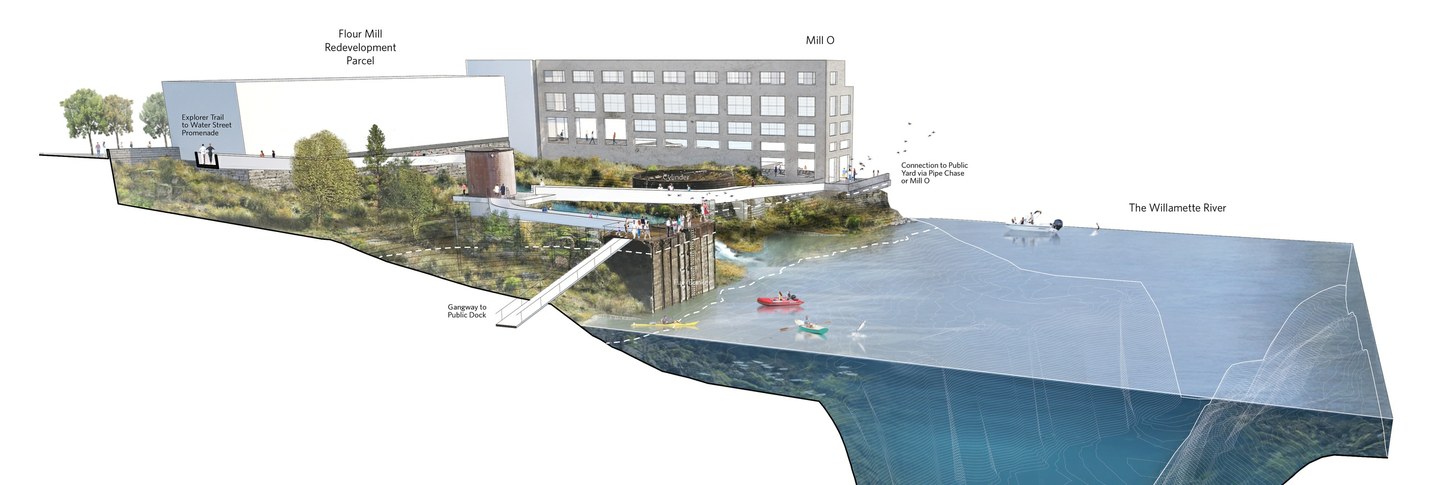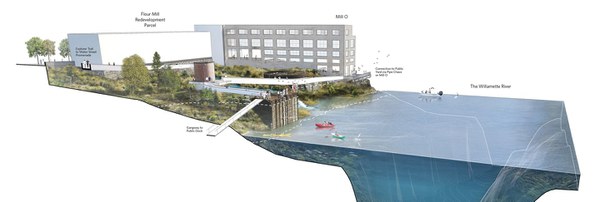
Bliss Symposium Award
Melody Stein, Master of Landscape Architecture candidate, 2019, Harvard Graduate School of Design
Attending the 2017 Garden and Landscape Studies Colloquium at Dumbarton Oaks was an incredible experience that brought new inspiration and motivation to my studies and professional pursuits. The program of speakers contributed a diverse range of perspectives and practices that together produced a snapshot of the field today. The Bliss Award allowed me to not only attend the conference and hear these preeminent voices, but also to interface with the speakers directly. Meeting and having lunch with the participants was an incredible opportunity to have in-depth conversations in a setting that prioritized discussion and the development of connections that go beyond simply answering a question. However, the most unexpected outcome of the Bliss and Mellon Award program was the exchange between the other student awardees in attendance. So often, academy is separated from practice, but the divisions between academic institutions are just as siloed. Meeting and learning from the other awardees was a way to find commonality and connection between the theories and focuses of the most productive landscape architecture graduate programs in the country. In many ways, the Dumbarton Oaks Colloquium on Garden and Landscape Studies was about the process of bringing together and building bridges. From Sara Zewde’s empowering discussion about the importance of cultural interpretation to Jose Castillo’s unpacking of ideas surrounding normality and marginality in the face of extreme urbanisms, the theme of the conference couldn’t be clearer. “How Designers Think” became an interrogation, not a definition; an acknowledgement of plurality, not a singular response.
Mellon Colloquium Award
Liz Camuti, Master of Landscape Architecture candidate, 2018, University of Virginia
Attending the “How Designers Think” colloquium at Dumbarton Oaks was a fantastic opportunity to further my graduate studies in landscape architecture. Often in our field, we talk about designing for fragile ecologies and risk-prone urban communities through lenses of data and metrics, and while this somewhat quantitative approach to design has been valuable in many ways, it was incredibly refreshing to hear from mid-career professionals who, as speaker Sara Zewde said, are “putting the people back in landscape urbanism.” The designers who spoke at the colloquium are not simply inserting theory into the conceptual phases of their design projects, or designing from data, but are using lessons from art, film and individual communities to construct public spaces that truly resonate with and function for those who experience them.
As someone interested in working in extreme climates that are particularly vulnerable to the impacts of climate change, it was fascinating to hear from designers such as Gina Ford, Jennifer Bolstad and Walter Meyer, who have spent their careers designing for coastal resiliency. Their work makes evident the important notion that when we talk about rebuilding after catastrophic weather events, we are ultimately talking about designing for the residents impacted by these events. To design for particularly vulnerable communities, we cannot depend solely on our own knowledge, of ecological systems or otherwise, to protect us against climatic forces; creating true resiliency necessitates a look to the history, culture and traditions of the specific individuals we are designing for (and with), as a way of inspiring continued action. These lessons regarding place and identity are continually provided by the humanities, which makes the work being done at Dumbarton Oaks through the Mellon initiative more important than ever.
Katie Kelly, Master of Landscape Architecture candidate, 2019, University of Virginia
The question of how designers think has as many answers as there are designers. It was fascinating to see the process through which these eight designers conceive of ideas and how different those processes can be. What united all the projects that were presented last Friday was a curiosity and joy embedded in the work.
The most valuable part of the event for me was to see the precedents, theories and experiences that shaped each designer’s work and influenced their personal design philosophies. For Michelle Delk, it was the landscape she “emerged from” in Iowa and the beauty she sees in forgotten sites. For Sara Zwede, creating a framework for cultural ecologies drives her work. As a graduate student and nascent designer, the lineage of experiences that influence my process is less apparent, but I’m encouraged by the presenters to continuously push my own design philosophy.
I left the colloquium filled with immense optimism for the future of the profession and my ability to carve a place within it. I feel incredibly privileged to have had the opportunity to see how these designers think.
Jean Ni, Master of Landscape Architecture candidate, 2018, University of Washington
Rummaging through precedents is an old studio habit—especially rampant in the times that I should be moving forward and producing my own work—that allows me to consume images of beautiful, complex worlds that professionals craft in built domain. It is easy to get lost in physical forms, diagrams, and renderings. Yet, it is a rare event that the non-visual, conceptual details of a designer’s intent or process can be laid out for others to contemplate. Upon reflection of the “How Designers Think” colloquium, I feel incredibly lucky to have been immersed in an environment of such thoughtfulness and interdisciplinary fluidity that reflects how I would like to shape my own practice in the field.
A few things I learned and plan to apply to my own academic investigations:
- The landscape is a medium of human experience with the world.
- Deep historical and cultural investigations yield poignant, legible concepts which speak to embedded memory and place.
- Landscape qualities are inherent to space, and there isn’t always something to be added.
- The boundaries that we are given are never quite big enough. (Move beyond them!)
It is reassuring to learn that, as students, we are often grappling with similar questions of process, understanding, and action as professionals in the field. Hearing from designers who engage a robust synthesis of interdisciplinary knowledge in their work encourages me to continue seeking out perspectives from community-based historians, anthropologists, biologists, seismic engineers, sculptors—all in purposeful drift toward a strengthened literacy of land.
Gene Stroman, Master of Landscape Architecture candidate, 2018, University of California, Berkeley
November’s “How Designers Think” colloquium at Dumbarton Oaks featured dynamic presentations from a diverse group of practitioners in landscape design. Perhaps more unexpectedly, the presentations contained myriad references to the cinema, a realm that is becoming increasingly relevant to the work of a landscape designer. For example, in speaking about Sasaki’s work in the Lower Mississippi River Delta, Ford referenced Beasts of the Southern Wild (2012) as a way to render the cultural and ecological embedded within the landscape.
It is evident that motion picture is becoming a beloved source of knowledge and inspiration among designers. Functioning to bridge understandings across cultures, film has a special role in mediating the way we perceive and discuss ideas and landscapes. In his presentation “The Real and the Marginal,” Jose Castillo of a|911 argued that designers should not be afraid to be emphatic. In order to push innovation within the discipline and in society, it is necessary to dream big, much like the protagonist in Werner Herzog’s epic Fitzcarraldo (1982) who manages to drag a steamboat over a steep forested hill in the Amazonian rainforest.
Lizabeth Wardzinski, PhD candidate, History and Criticism, College of Design, North Carolina State University
Designers and historians uniting to discuss how designers think is rare, be it designers looking to history to understand their own design methodology, or historians asking how history can aid in the development of new design thinking. The “How Designers Think” colloquium brought these two groups together, and I felt, as a historian, demonstrated how these two professions can advance future design thinking.
Studying the architectural and planning history of the Tennessee Valley Authority (TVA), I often find unenthusiastic reactions of citizens to the work of the New Deal designers and these reactions demand that I consider how designers can utilize historic precedent to diminish the adverse response of users to human intervention. As designers work to mitigate the effects of increasing weather disasters, they will inevitably be changing the physical landscape. It is imperative that this is done thoughtfully and with respect for deterministic dependence on the change in conditions. Gina Ford’s presentation demonstrated this idea to the attendees of the colloquium. Just as Sasaki Associates attempted to thwart the future destruction of the Cedar, Chicago, and Mississippi rivers, the TVA attempted to intervene in the damaging floods of the Tennessee River. By touching just one bank, diverting the flow of one tributary, or changing the location of a river mouth in one area, the river and its citizens feel the effect. The citizens of the Tennessee Valley best understand this lesson, and with a view toward historic precedent, the way designers think will be enhanced by lessons learned. If you will forgive me a few more lines, a quote that ran through my head all day while at this fantastic colloquium: “That the river is everywhere at the same time, at the source and at the mouth, at the waterfall, at the ferry, at the current, in the ocean and in the mountains, everywhere, and that the present only exists for it, not the shadow of the past, nor the shadow of the future.” (Hermann Hesse, Siddhartha)

